- Home
- Sherrilyn Kenyon
The Writer's Guide to Everyday Life in the Middle Ages: The British Isles From 500-1500 Page 2
The Writer's Guide to Everyday Life in the Middle Ages: The British Isles From 500-1500 Read online
Page 2
For this reason, I urge all writers to be careful of what old beliefs about the Middle Ages they hold. Just like old wives’ tales, these commonly held beliefs can be misleading or incorrect. Only careful research will prevent embarrassing mistakes.
This book is designed as a mere starting point or as a reference to look up much needed information as quickly as possible. Each section offers a brief overview of the subject and should be treated only as such.
Though I have tried to be as thorough as possible and to present facts objectively, I realize that at times I have inserted my own views drawn from my own research. And as with all historical works, time and space prevented me from exploring all angles and arguments.
I would also like to note that though I’ve had professors and colleagues review my work and have followed some of their guidance, ultimately I had to make the decision on what to include and on what view I hold on certain issues. This book is a reflection of my research, not theirs.
I wish all writers much success with their historical endeavors, and I hope this book provides the reading lists and necessary information to make those books as accurate as possible.
PART ONE
Everyday Life
* * *
CHAPTER ONE
FOOD
Food in a castle was served in the great hall, a large room usually on an upper floor. The lord’s table was set up along one wall on a small dais, the rest of the tables were positioned in a perpendicular fashion to the lord’s dais. Lower tables were called trestle tables, and when the meals were not being eaten, these tables were taken down and stacked in designated areas. The lord, his guests and family who all sat at the lord’s table were the only ones to have chairs; everyone else sat on a bench.
Breakfast was a small snack usually served after morning mass. It consisted of a hunk of bread and ale or cider for the retainers and servants. The lord, his family and guests might be served white bread with a cold slice of meat, cheese and wine.
Dinner, served between 10:00 A.M. and noon, was the main meal of the day. A trumpeter or crier would announce the meal at a castle. When a guest entered, the ladies would curtsey and take their seats. The lord might give the guest a light, quick kiss before showing the guest to his seat at the lord’s table.
Attendants or pages would bring a washbowl forward and pour water for the guest and lord out of an aquanmanile (an elaborate pitcher). The rest of the diners would wash their hands in a lavabo-type dispenser in the great hall and dry their hands on a long towel. They would then take their seats at the lower trestle tables on benches that often served as their beds at night.
The diners were served in order: first the visiting clergy, the visiting nobles, the lord and his family, then the retainers.
Table settings included a silver salt cellar, a nef and cups. The cups were made of silver, pewter, wood or horn, though the wealthy could have cups made of coconut shells, ostrich eggs, agate or gourds. Spoons were provided, but guests were expected to bring their own knives to table (forks did not appear until the late fourteenth century and weren’t commonly used until the Renaissance).
Either wooden bowls were set out with a thick slice, or chunk, of bread lining the bottom, or round bread would be scooped out to form a bowl. The lord and his guests usually had a silver platter and the rest of the diners were served from wooden platters (one platter was shared by two people). From these platters, the food was placed upon a trencher to be eaten. Platters were used solely for serving.
A large trencher made of bread was set on the table (one for every two people). One person sliced the trencher and kept half, and the other person used the second half as a plate. Plates are not found in England until the very end of the fourteenth century.
Dinner began with a blessing from the chaplain followed by a procession led from the unoccupied side of the lord’s table by the steward who oversaw the staff. Next came the pantler who distributed bread and butter, the butler and his assistants who poured the wine, beer or ale, and the kitchen assistants who brought in the rest of the first course. A course was cleared completely from the tables before the next was brought in.
Food was either carried up from a lower level of the castle, or brought in from a separate building. As a result, the food was seldom, if ever, more than lukewarm.
Everyday dinners had two or three courses each, and the last course usually consisted of fruits, cheeses, nuts, wafers and spiced wine. A feast could consist of a number of courses and stagger the average person’s imagination with the complexity and variety of dishes.
Pages, or cup bearers, made certain no one’s cup went empty. When meat was brought into the great hall on a spit, a young gentleman carver would slice it. But since most meat was boiled, a lord or guest would indicate which meats he wanted and a servant or page would place it on his platter. From there, meat was cut and distributed between dining partners so that a lower ranking lord would serve a higher ranking lord, a man would serve a woman, and a young person would serve an elder.
Food was eaten with the fingers, except for broth, which was sipped, and some stews, which were eaten with spoons.
Before the meat was served, the bread would be broken, or the trencher sliced in half, with each person receiving an equal share.
At the end of the meal, the diners would again wash their hands and return to their duties. The trenchers and bowl liners were gathered by servants and given to the almoner who saw that they were distributed to the poor and needy.
Merchants ate in a similar fashion, but their meals were not as large, or their retainers as many. A tablecloth was draped over each table with one side longer to be used by everyone as a napkin. During a festive occasion with many courses, the tablecloth was changed between each course. Each diner had a knife, spoon and a trencher of day-old bread, which wouldn’t absorb all the juices of their food as quickly as fresh-baked bread. Blessings were said by the youngest family member or by a visiting clergyman.
A peasant’s meal was much more humble. An average meal generally consisted of porridge, turnips, dark bread (only the nobility had white bread), and beer or ale. A salad might be added that would consist of parsley, borage, mint, rosemary, thyme, purslayne, garlic or fennel, and a vinegar or verjuice dressing. During hog slaughtering season, peasants would eat pork and bacon, but usually fish was the primary source of meat.
Villagers would eat bread–either rye, barley or wheat–that was occasionally mixed with peas or beans. They also enjoyed oatmeal cakes, porridge, fish, cheese curds, watery ale, mead, cider and metheglin.
Supper at the castle was a light meal served at sunset and usually consisted of one main dish, several small side dishes and cheese. After supper, castle occupants might be entertained by a traveling minstrel, acrobat, contortionist, jongleur or storyteller who performed for their food and were usually given coin as well. If no professional entertainers were present, games might be played, or the lady of the hall or a knight might provide entertainment with a song, instrument or a story.
For the lord or his family who might be absent during a meal, or for someone who came unexpectedly and might need food, bread, cold meat, meat pies, cheese and drink were kept in a livery cupboard located in or near the great hall. Some nobles even had a small livery cupboard in their personal chambers, but this was frowned on by the church as a form of gluttony.
The clergy ate only one meal a day. However, during the summer a light supper was permitted in addition to the midday meal. Each order had its own regulations about what and how much food should be eaten. The Carthusians in Germany, for example, ate vegetable platters. French Cistercian monks ate barley bread, and vetch or millet with boiled roots or nettle leaves. The Benedictines forbade meat except for the sick. On fasting days, oysters, fish and poultry were eaten.
Meals in a monastery were supposed to be eaten in silence even though many clergymen would sign to one another while eating. A lector would stand and read inspirational works during the meal
.
TYPES OF FOOD
Throughout the period, a variety of foods was eaten by all classes. Some of the foods (due to preservation techniques of salting and applying heavy spices to disguise rotting) would be quite unappealing to the twentieth century palate. Nobility tended to eat mostly meats and pastries. Merchants also consumed a lot of meat, but would also eat vegetables. The poor ate a diet predominately of vegetables and dark breads.
The most common vegetables (which were dubbed commoners’ food) were onions, peas, beans, cabbage, parsley, shallots and potherbs. Cucumbers and leeks were avoided since most considered them unhealthy. Tomatoes, potatoes and Indian corn did not exist in Europe until the sixteenth century.
Common meats included the following:
Birds: starlings, vultures, gulls, herons, storks, cormorants, swans, cranes, peacocks, capons and chickens.
Seafood: dogfish, porpoises, seals, whale, haddock, cod, salmon, sardines, lamprey, dolphins, tunnies and eels.
Other meats: venison, mutton and pork. Horse meat was forbidden by the church.
Fruits in the Middle Ages were smaller and usually grown in the wild. Raw fruits were thought unwholesome and were seldom served. Fruits mainly consisted of apples, plums, pears, peaches and nuts. Citrus fruits, such as oranges and lemons, were not found in England until the Crusades, and even then they were rare treats. The first recorded large shipment of oranges didn’t occur until the late fourteenth century.
Desserts consisted of cheeses, cakes, wafers, spiced wines, cookies, waffles and jellies.
Nobility drank wine, which was sometimes spiced to cover the taste of souring and often diluted or mixed with honey or cinnamon. Mulled wine was the only drink served hot. Lower classes drank mead, ale and beer. The clergy scented their mead with herbs and honey and sometimes added water.
All medieval dishes relied heavily on spices for a number of reasons, the largest being that spices covered the taste of spoiling meat. Garlic was used so heavily by the French that the crusaders offended the people of Constantinople with their breath!
Sugar, one of the most valuable spices, was expensive to import, but from the twelfth century onward, it was a common ingredient in England. Sugars from Alexandria were especially coveted because they were flavored with rose and violets. The most common spices were pepper, mustard, garlic, cloves, vinegar, verjuice, cinnamon, almonds and saffron. Wine and ale were often used to cook fish.
MANNERS
Since the platters and trenchers were shared among the nobility and merchant class, stringent rules of etiquette applied to table manners. People were expected to wash their hands before eating. If dining with the king, a person must bow to the nef before passing it.
People were to always wipe their mouths before taking a drink from the goblet (cups were also shared between two people). Diners ate slowly, taking small bites. They were never to speak with their mouths full, nor were they to take a drink with food still in their mouths. Knives were used for cutting and were not supposed to be placed in the mouth. Spoons were set on the table, not left in the bowl.
Diners were not to gnaw on bones with their teeth, poke their fingers in eggs, spit across the table, wipe their mouths on their sleeves, or bite into the trencher, since this was given to the poor to eat.
Like today, elbows were not supposed to be put on the table, soup was not to be slurped, and there was no belching, leaning over the food, or picking any orifice. No one was supposed to wipe their teeth or knife on the tablecloth, or butter bread with their thumbs.
Food was not to be plunked down in the salt cellar, nor was food to be blown upon to cool it (although, just as people presently do, this often went unheeded). Scraps were not to be fed to the dogs while the diners ate, and many etiquette books spoke against tossing scraps to the dogs even after the meal.
Assorted Food Facts
Food imports and exports played a vital part in trade. England exported fish, cheese and ale and imported raisins, figs, dates, olive oil, wine, almonds, rice and pomegranates. Spain was known for exporting sugar, preserved fruits and syrups. France was known for exporting wine, and Italy for pies.
Food was usually plentiful in the spring and summer, provided there were no droughts, crop failures or pillaging. In winter, cow’s milk was scarce and seldom used to cook with.
To ensure survival, meats were salted and stored using one of two methods: dry salting (burying meat in salt) or brine curing (soaking meat in a salt solution). Until the fourteenth century, several types of fish were not gutted before they were preserved.
Due to the heavy amount of meats and pastries consumed by the upper classes, many health problems existed, such as skin irritations, scurvy, tooth decay, heart disease, and numerous infections from bad meat.
For main dishes, cooks paid special attention to the appearance of the food. Swans were cooked fully feathered; heads and other parts of animals were either left on or sewed on after cooking. Many subtleties (sculptures of jelly, sugar and paste) were made.
Common Dishes of Scotland and England
A few common Scottish dishes include:
Antholl Brose: Made from ale, oatmeal and honey.
Barley Bannocks: A type of bread made from barley, flour, salt and buttermilk.
Carrageen Jelly: Made from seaweed and milk.
Colcannon: A stew made from cabbage, turnips and carrots.
Crowdie: In the Highlands, it’s a type of cheese; in the Lowlands, it’s milk and oatmeal.
Forfar Bridies: A mincemeat pastry.
Gundy: A type of candy made with sugar, butter and black treacle. Best when seasoned with cinnamon.
Haggis: A sheep’s bladder stuffed with onions, oatmeal, liver, heart and beef.
Hotch-Potch: A type of stew made with beef or mutton.
Beverages include:
Pirr
Blaand
Heather Ale
Drammach.
In England some common dishes include:
Stuffed Pigling – pigling stuffed with nuts, cheese, eggs, spices, bread.
Entrayale – a dish made of sheep’s stomach. The stomach is stuffed with eggs, vegetables, bread, cheese and pork.
Lampreys in Galytyne – a type of spiced lamprey dish.
Blackmanger – a chicken dish made with rice, almonds and sugar.
Mortrews – a meat dish made with eggs and bread crumbs.
Viaund Royal
Capon de Haut de Grace
Venison en Frumenty – venison and whole wheat boiled in milk and heavily spiced.
Frumenty Pudding – a wheat, milk pudding.
Leche Lumbarde
Blaundesorye
Beverages include:
Cowslip wine
Dandelion wine
Elderberry wine
Apple beer
RECIPES
Water for washing hands: Boil sage, rosemary, bay leaves or chamomile in water. Strain, then cool and pour in a bowl.
Mead: Dissolve four pounds of honey in a gallon of water with half an ounce of ginger. Boil for approximately forty-five minutes, then pour into a barrel or wooden container. Before it cools completely, add yeast and wait for it to ferment. After fermentation, seal and store for six months.
Lampreys In Galytyne: Skin and gut a lamprey, making sure to keep the blood in another container for later use. Roast the lamprey on a spit, and save the grease. Mix ground raisins with rose petals and combine with bread crusts and vinegar, or verjuice. Add powder ginger and the blood and grease to the raisin mixture, then boil together and salt to taste.
Cheese Crowdie: Heat soured milk until it separates. Do not boil. Strain the whey. Season the solid cheese block with salt, pepper and a dab of garlic. Let stand for a day or two.
Haggis: Soak a sheep’s bladder in salted water for at least twelve hours. Turn the roughened side out, then wash the small bag. Hang the windpipe over the edge of the pot. Cover with water and boil for an hour or two. Afterwards, cut off the pipe and gri
stle. Finely chop the heart and half of the liver. Add two chopped onions, garlic and oatmeal, and moisten with broth. Put the mixture inside the large bag and sew closed. Boil for approximately three hours, cutting a small hole when the bag begins to swell.
Eels: Skin and gut eels, then cut into chunks and place them in a pan of salted water. Add chopped parsley, garlic and pepper. Boil until the eel chunks begin to split.
Blackmanger: Cut chicken into chunks, and blend with rice that has been boiled in almond milk and salt and seasoned with sugar. Cook until mixture is very thick and garnish with anise and fried almonds.
FOR FURTHER READING
T. Austin, Two Fifteenth Century Cookery Books.
T. Bayard, A Medieval Home Companion.
M. Black, The Medieval Cookbook.
F.J. Furnivall, The Babees’ Book: Medieval Manners from the Young.
J. and F. Gies, Life in a Medieval City.
J. and F. Gies, Life in a Medieval Village.
P.W. Hammond, Food and Feast in Medieval England.
D. Hartley, Food in England.
U.T. Holmes, Jr., Daily Living in the Twelfth Century.
CHAPTER TWO
CLOTHING
In the early Middle Ages, very little separated the dress of the nobility from that of the peasantry. The styles of clothing and the types of fabric they wore were very much alike. This similarity in dress, however, should not suggest an egalitarian society in which the nobility was uninterested in distinguishing themselves from the common folk. The similarity was due mostly to limited trade caused by poor travel conditions. Remember that the roads at this time were terrible, so merchants and peddlers could not go far with their carts and wagons. And even those roads that were passable were riddled with thieves who often killed travelers to steal their belongings.

 Styxx
Styxx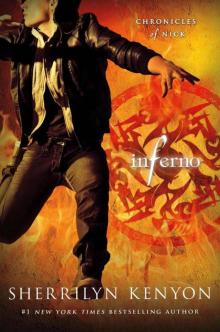 Inferno
Inferno Dark Side of the Moon
Dark Side of the Moon Infinity
Infinity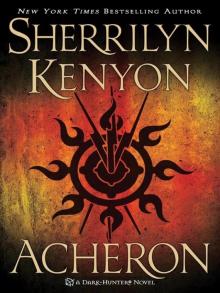 Acheron
Acheron Dead After Dark
Dead After Dark Playing Easy to Get
Playing Easy to Get Second Chances
Second Chances One Silent Night
One Silent Night Night Play
Night Play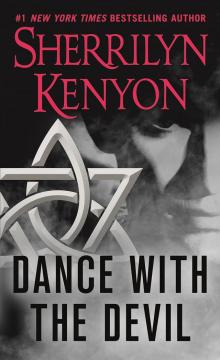 Dance With the Devil
Dance With the Devil Unleash the Night
Unleash the Night Born of Legend
Born of Legend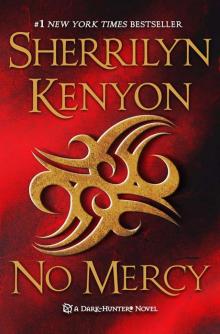 No Mercy
No Mercy Fire Bound
Fire Bound Seize the Night
Seize the Night Intensity
Intensity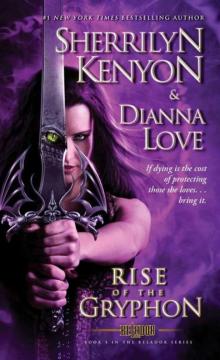 Rise of the Gryphon
Rise of the Gryphon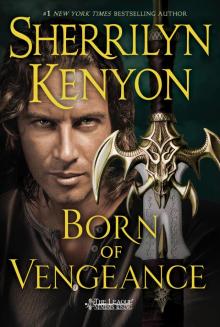 Born of Vengeance
Born of Vengeance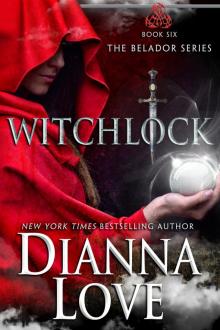 Witchlock
Witchlock Retribution
Retribution The Curse
The Curse Dragon King of Treoir
Dragon King of Treoir The Dream-Hunter
The Dream-Hunter Cloak & Silence
Cloak & Silence The Guardian
The Guardian Sins of the Night
Sins of the Night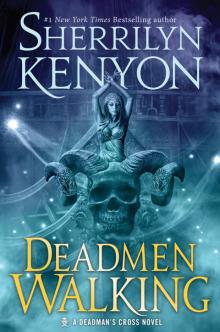 Deadmen Walking
Deadmen Walking Upon the Midnight Clear
Upon the Midnight Clear Dream Chaser
Dream Chaser Dragonmark
Dragonmark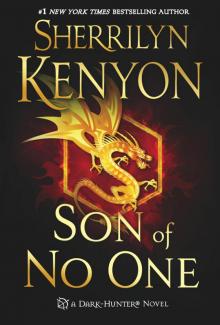 Son of No One
Son of No One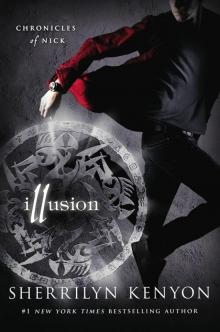 Illusion
Illusion In Other Worlds
In Other Worlds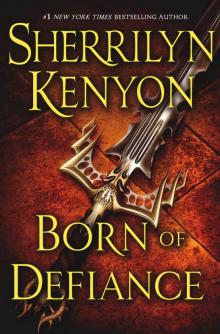 Born of Defiance
Born of Defiance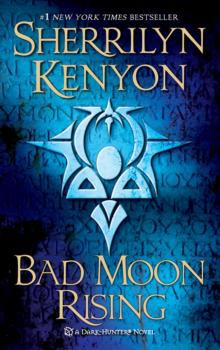 Bad Moon Rising
Bad Moon Rising Born to Be Bad
Born to Be Bad Born of Ice
Born of Ice Bad Attitude
Bad Attitude A Dark-Hunter Christmas
A Dark-Hunter Christmas Dream Warrior
Dream Warrior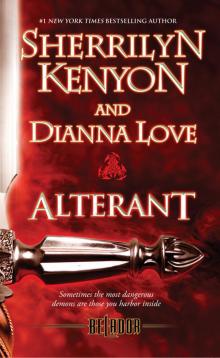 Alterant
Alterant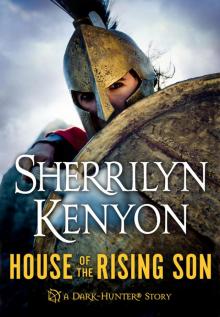 House of the Rising Son
House of the Rising Son Instinct
Instinct Stygian
Stygian Devil May Cry
Devil May Cry Time Untime
Time Untime Dark Bites
Dark Bites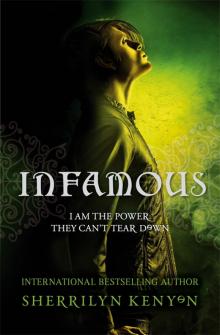 Infamous
Infamous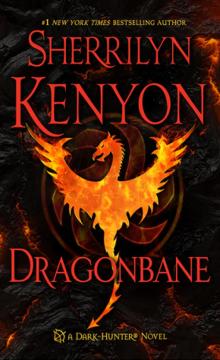 Dragonbane
Dragonbane Night Embrace
Night Embrace Kiss of the Night
Kiss of the Night Born of Fire
Born of Fire Invincible
Invincible Dragonsworn
Dragonsworn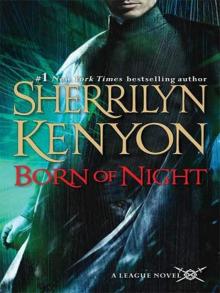 Born of Night
Born of Night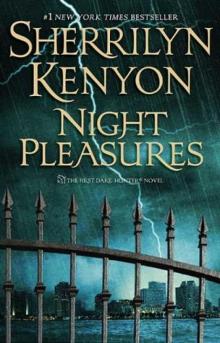 Night Pleasures
Night Pleasures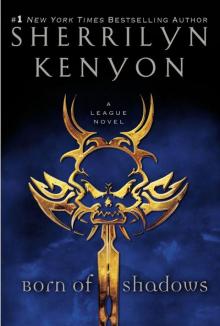 Born of Shadows
Born of Shadows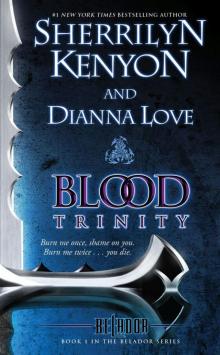 Blood Trinity
Blood Trinity Deadly Promises
Deadly Promises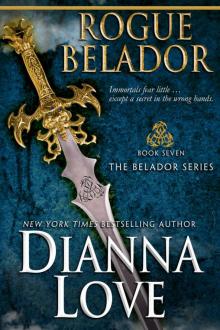 Rogue Belador
Rogue Belador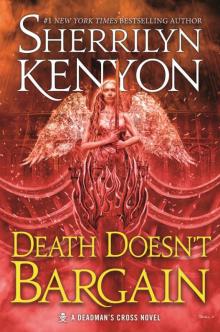 Death Doesn't Bargain
Death Doesn't Bargain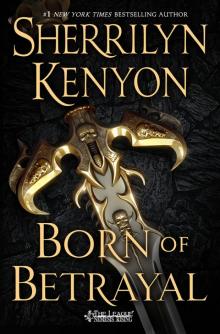 Born of Betrayal
Born of Betrayal At Death's Door (Deadman's Cross Book 3)
At Death's Door (Deadman's Cross Book 3) Belador Cosaint
Belador Cosaint Fire and Ice
Fire and Ice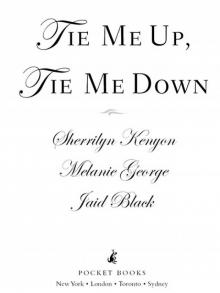 Tie Me Up, Tie Me Down
Tie Me Up, Tie Me Down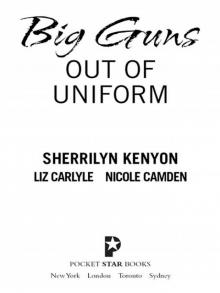 Big Guns Out of Uniform
Big Guns Out of Uniform Silent Truth
Silent Truth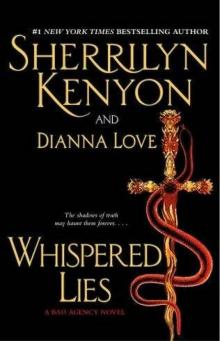 Whispered Lies
Whispered Lies Phantom in the Night
Phantom in the Night![[BAD 07] - Silent Truth Read online](http://i1.bookreadfree.com/i/03/17/bad_07_-_silent_truth_preview.jpg) [BAD 07] - Silent Truth
[BAD 07] - Silent Truth Dark Bites (Dark-Hunter World)
Dark Bites (Dark-Hunter World) Stygian (The Dark-Hunter World Book 28)
Stygian (The Dark-Hunter World Book 28)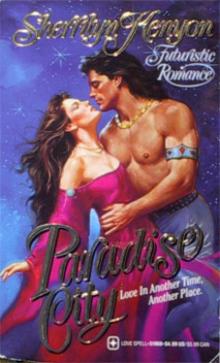 The League 3: Paradise City
The League 3: Paradise City Until Death We Do Part
Until Death We Do Part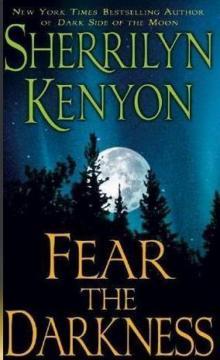 Fear the Darkness
Fear the Darkness Fantasy Lover
Fantasy Lover![Insurrection [Nevermore] Read online](http://i1.bookreadfree.com/i1/03/30/insurrection_nevermore_preview.jpg) Insurrection [Nevermore]
Insurrection [Nevermore]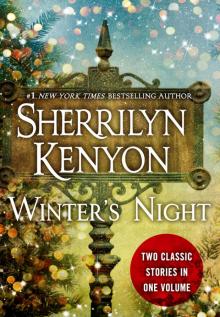 Winter's Night
Winter's Night Dead After Dark_Shadow of the Moon
Dead After Dark_Shadow of the Moon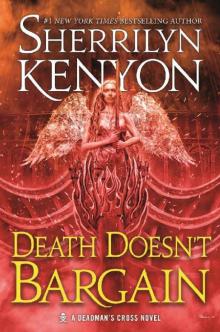 Death Doesn't Bargain: A Deadman's Cross Novel
Death Doesn't Bargain: A Deadman's Cross Novel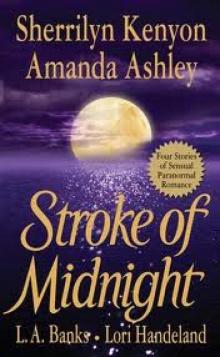 Winter Born
Winter Born Dragonswan
Dragonswan Rise of the Gryphon (Belador #4)
Rise of the Gryphon (Belador #4) Infinity: Chronicles of Nick
Infinity: Chronicles of Nick The League 1: Born Of The Night
The League 1: Born Of The Night What Dreams May Come (Berkley Sensation)
What Dreams May Come (Berkley Sensation) The Beginning
The Beginning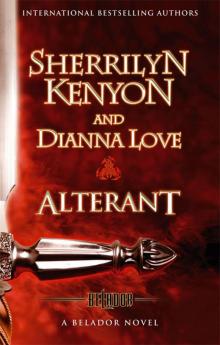 Alterant: Belador Code Series: Book Two
Alterant: Belador Code Series: Book Two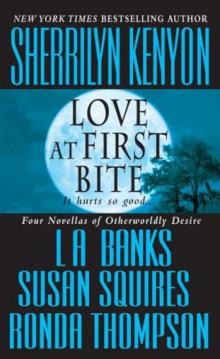 Love At First Bite
Love At First Bite Styxx (DH #33)
Styxx (DH #33)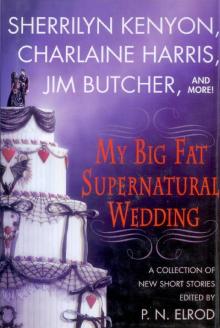 A Hard Day's Night-Searcher
A Hard Day's Night-Searcher Phantom Lover
Phantom Lover Cloak & Silence (The League)
Cloak & Silence (The League) The Curse (Beladors)
The Curse (Beladors)![[Dark Hunter-Were Hunter 2] - Night Play Read online](http://i1.bookreadfree.com/i2/04/08/dark_hunter-were_hunter_2_-_night_play_preview.jpg) [Dark Hunter-Were Hunter 2] - Night Play
[Dark Hunter-Were Hunter 2] - Night Play Chronicles of Nick 02 - Invincible
Chronicles of Nick 02 - Invincible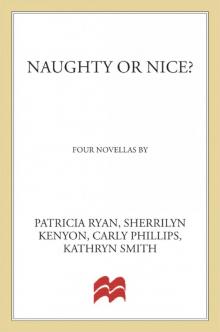 Naughty or Nice?
Naughty or Nice? BAD to the Bone
BAD to the Bone Stroke of Midnight
Stroke of Midnight![Dragonbane_[AN_SK] Read online](http://i1.bookreadfree.com/i2/04/12/dragonbane_an_sk_preview.jpg) Dragonbane_[AN_SK]
Dragonbane_[AN_SK] Man of My Dreams
Man of My Dreams